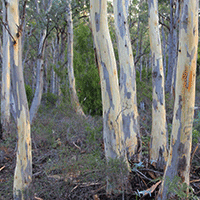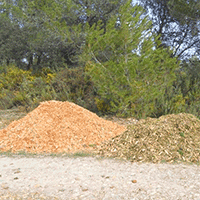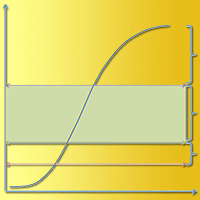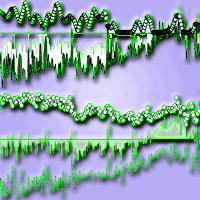
Carbon emission reduction potentials through thinned wood in Japan
H Etoh, N Sasaki , S Chay, H Ninomiya
iForest - Biogeosciences and Forestry, Volume 4, Issue 3, Pages 107-112 (2011)
doi: https://doi.org/10.3832/ifor0574-004
Published: Jun 01, 2011 - Copyright © 2011 SISEF
Research Articles
Abstract
Substituting fossil fuel with woody biomass for bioelectricity production has great potentials for carbon emission reductions while increasing forest productivity to increase carbon sequestration and improve ecological functionalities. Until recently, study on such potentials was very limited. Beginning in 2007, Japan’s special budgets were allocated for a 6-year intensive thinning on about 3.3 million ha of young stands for increasing carbon sinks in Japanese forests to meet the capped amount of 47.7 Tg CO2 year-1 allowed under the Marrakesh Accord. Because of only 30% of the thinned wood were used for sawntimber, CO2 and CH4 must have been emitted from the disposed thinned wood and wood waste. Such emissions and reduction potentials need to be assessed to provide future alternatives for climate change mitigation. We assessed carbon emission reduction potentials when woody biomass from thinned wood is fully utilized for bioelectricity production as compared with the generation of the same amount of energy produced under coal, oil, and natural gas scenarios. Our analytical results show that if all disposed thinned wood and wood waste are utilized to generate energy, about 62.6, 58.3, and 37.8 Tg CO2 year-1 could be prevented from emitting depending on emission scenarios or about 33.2, 30.9, and 20.0% of Japan’s reduction commitment to the Kyoto Protocol. On the other hand, if thinned wood and wood waste are not utilized, about 13.4 Tg CO2 year-1 would be released due to thinning. Our results suggest that incentives to reducing emission reductions in forest sector in the future climate change mitigation agreements will likely lead to large emission reductions, otherwise leakages due to thinning are unavoidable.
Keywords
Bioenergy policy, Carbon sinks, Disposed thinned wood, Thinning, Woody biomass
Authors’ Info
Authors’ address
N Sasaki
S Chay
H Ninomiya
Graduate School of Applied Informatics, University of Hyogo, 7-1-28-6F Minatojima-minamimachi, Chuo-ku, Kobe 650-0047 (Japan)
Corresponding author
Paper Info
Citation
Etoh H, Sasaki N, Chay S, Ninomiya H (2011). Carbon emission reduction potentials through thinned wood in Japan. iForest 4: 107-112. - doi: 10.3832/ifor0574-004
Paper history
Received: Oct 08, 2010
Accepted: Mar 29, 2011
First online: Jun 01, 2011
Publication Date: Jun 01, 2011
Publication Time: 2.13 months
Copyright Information
© SISEF - The Italian Society of Silviculture and Forest Ecology 2011
Open Access
This article is distributed under the terms of the Creative Commons Attribution-Non Commercial 4.0 International (https://creativecommons.org/licenses/by-nc/4.0/), which permits unrestricted use, distribution, and reproduction in any medium, provided you give appropriate credit to the original author(s) and the source, provide a link to the Creative Commons license, and indicate if changes were made.
Web Metrics
Breakdown by View Type
Article Usage
Total Article Views: 57670
(from publication date up to now)
Breakdown by View Type
HTML Page Views: 48755
Abstract Page Views: 3397
PDF Downloads: 4051
Citation/Reference Downloads: 24
XML Downloads: 1443
Web Metrics
Days since publication: 5312
Overall contacts: 57670
Avg. contacts per week: 76.00
Citation Metrics
Article Citations
Article citations are based on data periodically collected from the Clarivate Web of Science web site
(last update: Mar 2025)
Total number of cites (since 2011): 6
Average cites per year: 0.40
Publication Metrics
by Dimensions ©
Articles citing this article
List of the papers citing this article based on CrossRef Cited-by.
References
For promoting the Kyoto protocol concerning the plan for attaining the target. Cabinet office, Government of Japan, Tokyo, Japan, pp. 1-10.
Gscholar
About the electricity purchase from new energy. Technical Report, The Chugoku Electric Power Co. Inc., Japan.
Gscholar
Decisions on optimal thinning by a recurring decision-making model. I. A maximization of total gains of stem volume. Journal of the Japanese Forestry Society 72 (4): 304-315.
Gscholar
The energy use of woody biomass - trend and problems. Investigation and information, Issue brief 510, National diet library, Japan, pp. 1-10.
Gscholar
Forest and forestry statistics handbook 2008. The Forestry Agency, , Japan, pp. 8-11.
Gscholar
News of the beautiful forest management. Technical Report No.115, The Forestry Agency, , Japan.
Gscholar
Annual report on trends in forests and forestry fiscal year 2009. Technical Report, The Forestry Agency, , Japan.
Gscholar
The possible role and contribution of geothermal energy to the mitigation of climate change. In: “IPCC Scoping Meeting on Renewable Energy Sources”. Luebeck (Germany) 21-25 January 2008, pp. 1-36.
Gscholar
About the surplus electricity purchase (only as for the electricity) from new energy. Hokkaido Electric Power Co., Inc., Sapporo, Japan.
Gscholar
About the electric value purchase from an RPS method object power supply. The Kansai Electric Power Co. Inc., , Japan.
Gscholar
New energy guidance of the surplus electricity purchase from generation. Technical Report, Kyushu Electric Power Co. Inc., Fukuoka, Japan.
Gscholar
Global warming and forests. Forest Science 52: 4-8.http://ci.nii.ac.jp/naid/110006633742
Gscholar
Target of the electric use by new energy about eight years after 2007. Ministry of Economy, Trade and Industry, Government of Japan, Tokio, Japan.
Gscholar
National greenhouse gas inventory report of Japan. The Ministry of the Environment, Government of Japan, Tokio, Japan.
Gscholar
Biomass energy introduction guidebook (3rd edn.). New Energy and Industrial Technology Development Organization - NEDO, Kawasaki, Japan, pp. 96-113 [in Japanese].
Gscholar
National greenhouse gas Inventory Report of Japan 2007. National Institute for Environmental Studies, CGER-I076-2007, Ibaraki, pp. 7-8.
Gscholar
Problem investigation for woody biomass generation introduction (1). The Institute of Energy Economics, Tokyo, Japan, pp. 1-10.
Gscholar
Visit world’s first biomass village Jühnde in Germany. V2-Solution Inc, , pp. 2-20.
Gscholar
Decision 14/CP.7. Report FCCC/CP/2001/13/Add.1, Conference of the Parties, 7th Session. Marrakesh (Morocco) Oct 29 - Nov 10, 2001. United Nations Framework Convention on Climate Change (UNFCCC), pp. 54-67.
Gscholar
An international comparison of the electric unit price. The Institute of Energy Economics, Tokypan, pp. 1-10.
Gscholar
CO2 reduction and trees, woods. News of Hokkaido forest products research institute. Forest Products Research InstituteJapan, pp. 1-5.
Gscholar

















